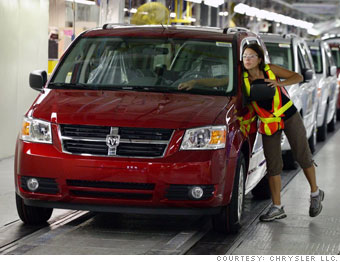What will (and won't) save Detroit
Washington wants answers, but there are no simple solutions to what's ailing the nation's automakers.

In spite of what you may have heard, a typical United Auto Workers member does not make anything like $73 an hour. The worker who bolted the hood onto your GMC Sierra is not taking home more than $150,000 a year.
The issue of pay inequities between factory workers at unionized plants run by domestic automakers and non-unionized plants run by foreign competitors is quite complex. Costs don't just vary on a worker-by-worker basis. The domestics have been operating factories in this country much longer than their Asian and European competitors. They have older, more experienced workers and many more retirees to support. Experienced auto workers - whether at a Toyota or GM plant - make between $25 and $30 an hour, according to various published estimates.
Recent union concessions allow U.S. automakers to replace many of those older workers with younger, new hires at lower hourly rates, something both GM and Chrysler have been doing. The union has also allowed cutbacks in its "jobs bank" system that lets workers get nearly full pay - with state unemployment benefits factored in - even after layoffs. Measures have also been taken to trim, or at least cap, retiree health care costs so the burden will eventually be taken off automakers' books. (The funding of this plan has become a major issue in current negotiations.)
Where there are savings left to generate will be in the area of factory work rules. But it's not true, as is often thought, that UAW workers are far less efficient than their Asian counterparts. In fact, according to the respected Harbour Report on factory efficiency, the 10 most efficient car plants in the U.S. all employ UAW workers.
Ultimately, labor costs are somewhat of a red herring. They contribute only about 10% to the overall cost of building a car, according to industry estimates, while parts and materials make up the vast majority.
Impact: There may be some more concessions and cost cuts, but probably not from further wage and benefit reductions. Automakers will probably try to get more savings from the concessions already offered.
NEXT: Small cars
